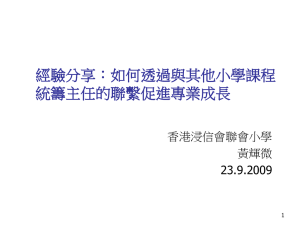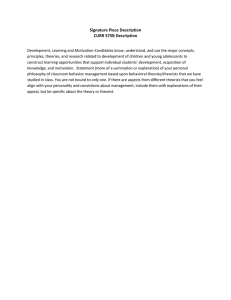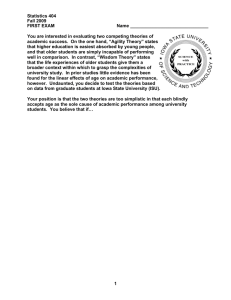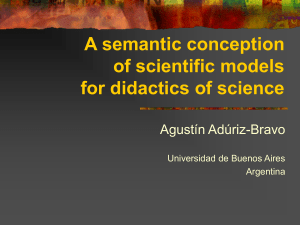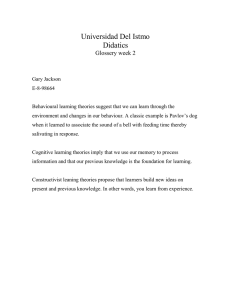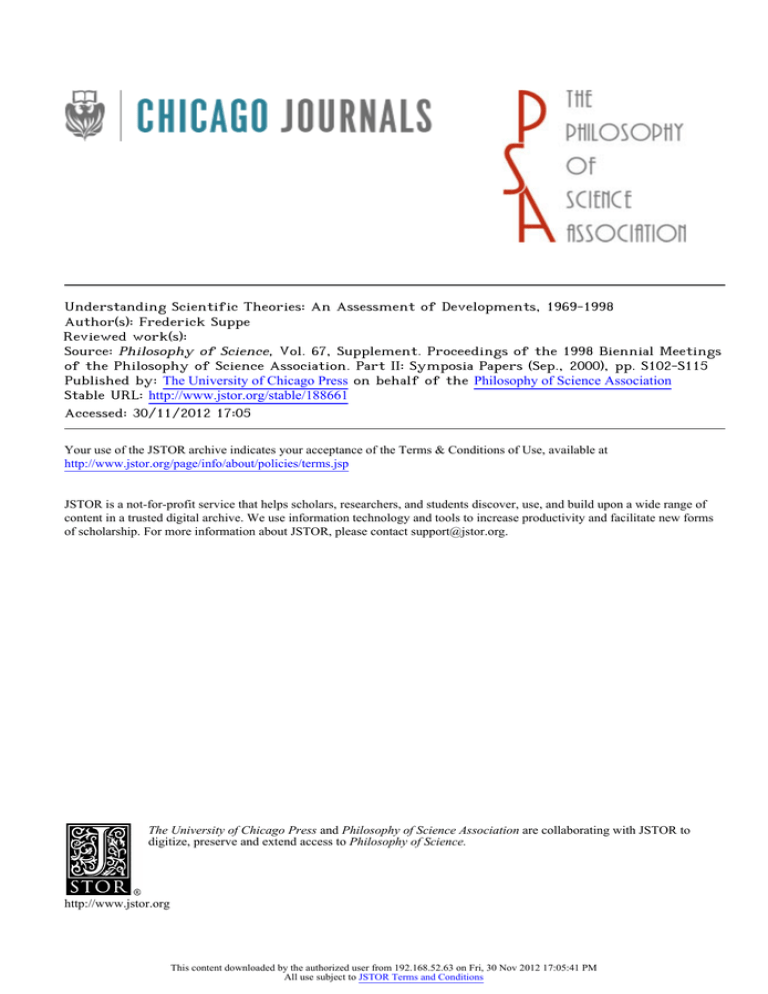
Understanding Scientific Theories: An Assessment of Developments, 1969-1998
Author(s): Frederick Suppe
Reviewed work(s):
Source: Philosophy of Science, Vol. 67, Supplement. Proceedings of the 1998 Biennial Meetings
of the Philosophy of Science Association. Part II: Symposia Papers (Sep., 2000), pp. S102-S115
Published by: The University of Chicago Press on behalf of the Philosophy of Science Association
Stable URL: http://www.jstor.org/stable/188661 .
Accessed: 30/11/2012 17:05
Your use of the JSTOR archive indicates your acceptance of the Terms & Conditions of Use, available at .
http://www.jstor.org/page/info/about/policies/terms.jsp
.
JSTOR is a not-for-profit service that helps scholars, researchers, and students discover, use, and build upon a wide range of
content in a trusted digital archive. We use information technology and tools to increase productivity and facilitate new forms
of scholarship. For more information about JSTOR, please contact support@jstor.org.
.
The University of Chicago Press and Philosophy of Science Association are collaborating with JSTOR to
digitize, preserve and extend access to Philosophy of Science.
http://www.jstor.org
This content downloaded by the authorized user from 192.168.52.63 on Fri, 30 Nov 2012 17:05:41 PM
All use subject to JSTOR Terms and Conditions
UnderstandingScientificTheories:
An Assessment of Developments,
1969-1998
FrederickSuppeti
TexasTechUniversity
The positivistic Received View construed scientifictheories syntacticallyas axiomatic
calculi where theoreticalterms were given a partial semantic interpretationvia correspondencerules connectingthem to observationstatements.This paper assesseswhat,
with hindsight,seem the most importantdefectsin the ReceivedView;surveysthe main
proposed successoranalysesto the ReceivedView-various SemanticConceptionversions and the StructuralistAnalysis; evaluates how well they avoid those defects;examines what new problems they face and where the most promising requirefurther
developmentor leave unansweredquestions;explores implicationsof recent work on
models for understandingtheories;and rebutsthe few criticismsof the SemanticConception that have surfaced.
1. Introduction.The Received View on Theories was the epistemic heart of
Logical Positivism. Twelve hundred persons were in the audience the night
it died. It was March 26, 1969-opening night of the Illinois Symposium
on the Structure of Scientific Theories. The Received View had been under
sustained attack for a decade and a critical mass of main protagonists had
been assembled to fight it out. Carl Hempel, a main developer of the
Received View, was the opening speaker and was expected to present the
Received View's latest revision. Instead he told us why he was abandoning
both the Received View and reliance on syntactic axiomatizations (Hempel
tSend requestsfor reprintsto the author, Departmentof Philosophy,Box 43092,Texas
Tech University,Lubbock, TX 79409-3092.
i: thank StevenFrenchfor helpfuldiscussionand accessto forthcomingworks.Thanks
also to other symposiumspeakersand to WalterVincenti.
Philosophy of Science, 67 (Proceedings) pp. S102-S1 15. 0031-8248/2000/67supp-0009$0.00
Copyright 2000 by the Philosophy of Science Association. All rights reserved.
S102
This content downloaded by the authorized user from 192.168.52.63 on Fri, 30 Nov 2012 17:05:41 PM
All use subject to JSTOR Terms and Conditions
UNDERSTANDING
SCIENTIFIC THEORIES
S103
1974). Suddenly we knew the war had been won, and the Symposium
became an energized exploration of where to go now.1
I assess where we actually went and what we learned about theories
and science in the process.
2. Why the Received View Failed. In the 1960s, the Positivistic Received
View on theories was attacked on the following grounds:
(1) its observational-theoretical distinction was untenable;
(2) correspondence rules were a heterogeneous confusion of meaning
relationships, experimental design, measurement, and causal relationships some of which are not properly parts of theories;
(3) the notion of partial interpretation associated with more liberal
correspondence rules was incoherent;
(4) theories are not axiomatic systems;
(5) symbolic logic is an inappropriate formalism;
(6) theories are not linguistic entities and thus theories are individuated incorrectly.
To my mind the most significant objections, in order, are (6) and (2).
(1) requires qualification since not all versions of the challenge are successful. (3) is false. (4) seems to me irrelevant. I discuss (5) in the next
section.
In 1969 a variety of alternative analyses were on the table such as construing theories as answers to scientific problems, or as paradigms, or
conceptual frameworks. Gradually analyses that construed theories as
extra-linguistic set-theoretic structures came to dominate post-positivistic
understanding.
3. Syntactical vs. Semantical Approaches. Objection (5) seems to me correct. But wide misunderstanding of it leads to endless silly, largely unpublished debates over what semantic approaches can do that syntactical or
statement approaches intrinsically cannot.
For positivists, theories were partially interpreted axiomatic systems
TC where the axioms T were the theoretical laws expressed in a theoretical
vocabulary VT; C were correspondence rules that connected T with testable consequences formulated using a separate observational vocabulary
V,. Only V0 sentences were given a direct semantic interpretation. Note
1. Unattributeddetails of the ReceivedView, its critics, and some associatedhistorical
comments are based on Suppe 1994a; other undocumentedhistorical comments regardingthe SemanticConceptionare based on Suppe 1989and 1998;personalinvolvement and recollectionare the basis for other undocumenteddetails.
This content downloaded by the authorized user from 192.168.52.63 on Fri, 30 Nov 2012 17:05:41 PM
All use subject to JSTOR Terms and Conditions
S104
FREDERICK SUPPE
that the Received View has a semantic component and is not wholly syntactical.
The Received View was a model of science ("explication") that had to
accommodate all genuine examples of good theories and exclude all clear
examples of bad theories. Modern physics was their paradigm of good
science and whenever they found incompatibilities with exemplary science
they modified their analyses accordingly. In practice this meant that they
adjusted their analyses to accommodate the best physics had to offer, but
deployed them normatively in evaluation of the social sciences.
When the C were required to be explicit definitions, theoretical assertions were guaranteed to refer to observable reality within TC's scope.
Once reduction sentences or interpretative systems were allowed, VTterms
could refer to observables or to nonobservables. That is, models of TC
included both. A general problem was that the Lowenheim-Skolem theorem implied that TC models must include both intended and wildly unintended models. Unintended models provide potential counterexamples.
Blocking them more concerns eliminating syntactical-approach artifacts than dealing with substantive analysis. Positivistic syntactical analyses of theories, confirmation, simplicity, and explanation persistently
were plagued by problems of unintended models a problem not peculiar
to positivism. For example, Kitcher's (1989) unification explanation account has a very simple idea. But he develops it syntactically spending
most of the paper trying to block unintended consequences that are artifacts of his formalism. Most of his paper has little to do with developing
his main idea.
Suppes (1967) contrasted positivism's "intrinsic formulation" syntactical approach to the "extrinsic" semantic approach wherein one directly
designates an intended family of models. Although formal semantics cannot designate precisely the intended set of models, our ordinary linguistic
resources suffice. In practice we do pick out just intended models (else
there would not be a problem of unintended models), and so we can proceed directly to the specification of these intended models without recourse
to syntactic axiomatization.
Increasingly positivism had become sidetracked from development of
their substantive ideas by technical problems that were mere artifacts of
modeling science via predicate-calculus axiomatizations. This is the correct
sense of (5)'s claim symbolic logic is an inappropriate formalism.
It concerns how serviceable the formalism is to the enterprise of modeling and understanding science. It has nothing to do with whether there
are things semantic approaches can do that syntactical approaches in principle can't do. That issue is irrelevant to assessing either the Received View
or semantic approaches.
Rather, the Devil is in the details.
This content downloaded by the authorized user from 192.168.52.63 on Fri, 30 Nov 2012 17:05:41 PM
All use subject to JSTOR Terms and Conditions
UNDERSTANDING
SCIENTIFIC THEORIES
S 105
4. The Semantic Conceptionof Theories. The Semantic Conceptionidentifies
theories with certain kinds of abstract theory-structures,such as configurated state spaces, standing in mapping relations to phenomena. Theory
structures and phenomena are referents of linguistic theory-formulations.
The basic idea is that theory structures are identified with suitably connected families of models. Depending on mapping relationships required
for theoretical adequacy, realist, quasi-realist or antirealist versions are obtained (Suppe 1998).
The Semantic Conception has been very successful. It is widely accepted
with remarkably little published criticism of it-none fundamental or fatal
(see Section 7). It also avoids the problems that scuttled the Received View:
Correspondence rules are avoided. Observational/non-observational distinctions are not required. Formalism artifacts that plagued positivism
have not occurred. It individuates theories better than positivism did (see
Section 5).
Avoiding such problems influenced Semantic Conception development,
but was not the main inspiration or motivation. All versions built on Birkhoff and von Neumann's (1936) seminal work on observation- and phasespaces and von Neumann's (1955) demonstration that two radically different quantum-mechanic formalisms were describing the same theorythe same configurated phase space. For Suppes and myself an important
motivation was making sense of personal experimental-scientist experiences we could not reconcile with the Received View.
Semantic Conception development has taught us a lot about the
mediation of theories and phenomena via observation or experiment, relations between models and theories, confirmation of theories, their ontological commitments, and semantic relations between theories, phenomena, and linguistic formulations. I briefly survey what was accomplished.
First, abandoning correspondence rules taught us much about how theories and models attach to nature. Suppes (1962) explored how theory
structureswere associated with phenomena in experimental circumstances.
Drawing on his mathematical learning theory laboratory experience, he
argued that the connection between theory and experiment is mediated
via a nondeductive hierarchy of models including the model of the experiment, models of data, experimental design, and ceteris paribus conditions.
This stimulated inquiry on epistemology of experimental design, data
analysis, instrumentation, and calibration culminating in recent modelingdata work discussed in Section 6 and some of Mayo's (1996) insightful
work.
Second, the Semantic Conception led to rethinking theory confirmation
and experiment's role. My Semantic Conception version maintains that
propounding theories consists in asserting suitable mapping relations between configurated state spaces and systems within the theory's scope.
This content downloaded by the authorized user from 192.168.52.63 on Fri, 30 Nov 2012 17:05:41 PM
All use subject to JSTOR Terms and Conditions
S 106
FREDERICK SUPPE
Because theories ignore all but a selected finite number of variables, the
relation has to be counterfactual wherein the theory structurespecifies how
systems within the theory's scope would behave were they isolated from
influences not showing up as theory state variables. This affects how theories are confirmed by experiment. Characteristic of experimental design
is control of extraneous variables so that only theory variables are influential. The logic of confirmation turns essentially on issues of experimental
control. I have developed a rigorous epistemology where the adequacy of
theories under controlled circumstances licenses the generalized conclusion that the theory was counterfactually true of all systems within its
scope. One carefully-crafted experimental instance is sufficient to establish
a scientific theory noninductively (Suppe 1993, 1997, forthcoming).
Van Fraassen's Semantic Conception version (1970) produced the idea
that confirmation involves establishing the empirical adequacy of theories-in work (1980) sparking realism/antirealism controversies dominating the 1980s (see below).
Third, the Semantic Conception yielded considerable insight on semantic relations between theories, their formulations, and reality as well as
associated ontological issues. Van Fraassen's starting point was the supposition that not everything referred to in a theory engenders ontological
commitment. The problem is giving full semantic interpretations of
theoretical language without excessive ontological commitments, thereby
avoiding instrumentalism. His solution (1967) is via semi-interpretedlanguages wherein languages are interpreted as referring to "logical spaces"
providing full semantic interpretations for theorizing languages. Ontological commitments are left unconstrained, being a matter of which logicalspace points one wishes ontologically to commit. Such commitments are
via individual mapping functions (Loc functions) from real-world objects
to points in logical space. Semi-interpreted languages provide a general
noninstrumentalistic framework for evading excessive metaphysical commitment.
Fourth, and for better or worse: The Semantic Conception generated
realism/antirealism controversies. Since theories are extralinguistic entities, realism/instrumentalism disputes had to be recast. On the Semantic
Conception realism debates concern the nature of the mapping relationships between theory structure and the world and ontological commitments associated with theories (Suppe 1989, 1998, forthcoming). Viewed
in semi-interpreted language terms, a realist has Loc functions onto every
state variable and maintains a theory is empirically true just in case theorystructure-allowed state transitions are identical to those possibly occurring
in the actual world. Antirealists do not commit ontologically to all state
variables. They only require countenancing Loc functions from observables and that theories be empirically adequate: If W is that portion of
This content downloaded by the authorized user from 192.168.52.63 on Fri, 30 Nov 2012 17:05:41 PM
All use subject to JSTOR Terms and Conditions
UNDERSTANDING
SCIENTIFIC THEORIES
S 107
reality to which one attaches Locfunctions, the image M* of W is among
the models comprising the theory.
Although van Fraassen (1980) resorts to an observational/nonobservational distinction to motivate his analysis, it works for any vocabulary
bifurcation, resulting in a general account how language can have full
semantic interpretations without generating ontological commitments to
every semantically utilized entity (Suppe forthcoming). He is particularly
concerned that science is irreducibly modal at various junctures, but it
seems excessive to commit ontologically to unreal possible worlds. Semiinterpreted languages divorce full semantic interpretation from ontological commitment. Within one's ontological commitment, empirical adequacy is equivalent to empirical truth. Antirealism thus is just realism
attenuated to the range of one's ontological commitment.
I question whether any theories meet realistic truth or antirealistic empirical adequacy requirements since theory-scopes include systems influenced by variables not taken into account. Real-world state transitions
often diverge from those specified in theory structures-making the theory
literally empirically false or inadequate. Quasi-realismconsists in ontological commitment to all variables that could be detected and the claim that
empirically true theories provide counterfactual characterizationshow systems would behave were they isolated from influences not taken into explicit account by the theory. One can adapt semi-interpretedlanguages to
develop quasi-realisms with van Fraassen-like restricted ontological commitments (Suppe forthcoming).
Fifth, understanding of modality in science has advanced. Semiinterpreted languages can be extended to interpret modal operators via
families of logical spaces (van Fraassen 1969); ontological commitments
still are just the Loc operators one commits to. Van Fraassen's Scientific
Image (1980) and QuantumMechanics (1991) identify areas of science he
believes are irreducibly modal, then provide semi-interpretedlanguage solutions for how to accommodate modality without unwanted ontological
commitments: Loc function choice remains free. Semi-interpreted languages enable avoiding Lewis-like (1973) commitment to real nonactual
possible worlds.
Sixth, phase space and similar Semantic Conception state-change
theory structures do not seem modal. This stimulated rethinking the role
of modality in theoretical laws. Van Fraassen (1989) argued that laws of
nature are not intrinsically modal. On my quasi-realistic view, theoretical
laws are not modal but yield counterfactual characterizations of the
world appropriately modeled using causal necessity operators. I face the
challenge of giving noncircular casually-possible-worlds semanticinterpretations of causal necessity. The insight that laws of nature are not
intrinsically modal combined with some deep insights of Richard Mon-
This content downloaded by the authorized user from 192.168.52.63 on Fri, 30 Nov 2012 17:05:41 PM
All use subject to JSTOR Terms and Conditions
S 108
FREDERICK SUPPE
tague's (1974) regarding semantic relationships between necessity and universality, and semi-interpreted languages allows solution to this reincarnation of Goodman's circularity problem (Suppe 1997, forthcoming).
Finally, insightful Semantic-Conception examinations of theories in
biology, economics, various social and health sciences, and physics have
been done by Lloyd, Thompson, Hausman, McKinsey, Suppes, van
Fraassen, myself, and others.2
The case has been made that the Semantic Conception has been an
effective vehicle for doing significant philosophical business and did not
get diverted by technical problems that were mere artifacts of our semantic
formalisms.
5. Structuralist Analyses and Theory Dynamics. Reason (6) for rejecting
the Received View was that theories were improperly individuated since
experimental procedures were incorporated into correspondence rules.
The Semantic Conception is inadequate if it cannot properly individuate
theories. Theories undergo development. This has implications for theoryindividuation. In present forms the Semantic Conception essentially treats
theory development as progression of successive theories. If wrong,
Semantic-Conception revisions making theories dynamic will be required.
Dynamics of theory development have been a central concern of the
StructuralistApproach. Like the Semantic Conception it analyzes theories
set-theoretically as comprised of a theory structure and intended applications, but is neo-positivistic in spirit and reliance on a relativized theoretical/nontheoretical term distinction. It began with Sneed's (1971) application of Suppes's (1957) set-theoretic techniques to the problem of
theoretical terms. Sneed noticed that when applying classical particle mechanics, determination of mass and force function values invariably must
utilize classical particle mechanics itself. He claimed this the characteristic
mark of theoretical functions or terms which threatens to make predictive testing of theory viciously circular unless contributions to theory empirical content are restricted.
Sneed's solution asserts empirical content of a theory varies from application to application, so the theory portion used to calculate theory
functions are not part of the empirical content of that application of the
theory. Yet theories have a unified content that cannot be accounted for
by a conjunction of statements. It follows that theories cannot be individuated on the basis of mere theory structure.
Sneed develops an empirical-content semantic analysis wherein theories
are individuated on the basis of a theoretical core and an intendedapplications core. Analysis of dynamics and individuation of theories is
2. See referencesand discussionin Suppe 1989.
This content downloaded by the authorized user from 192.168.52.63 on Fri, 30 Nov 2012 17:05:41 PM
All use subject to JSTOR Terms and Conditions
UNDERSTANDING
SCIENTIFIC THEORIES
S 109
driven by his formulation of the problem of theoretical terms which depends crucially on supposing theory testing requires prediction and an
independent determination whether the prediction is correct. If, as a growing number of philosophers and historians maintain, prediction is not
central to testing or confirmation (e.g., Brush 1989, 1990), Sneed's analysis
is unlikely to succeed.
Despite reservations over the Structuralist program, the idea of individuating dynamically-evolving theories via a structural core or partial
models is promising. Da Costa and French (1990) presented a partialmodels Semantic Conception analysis not tied to neo-positivistic ideas.
But they did not apply it to theory-individuation issues.
As with the Received View, I see theory-individuation issues as makeor-break for any account of theories including my own Semantic Conception. It is an area that deserves more work.
6. Models and Theories. On both Semantic and Structuralistanalyses, theories are representing families of metamathematical models which can be
interpretations of formalisms. This is the literal sense in which, pace Wade
Savage (1999), they are appropriately termed "semantic" in the fundamental Tarski sense. To my mind, the most exciting recent developments
concern the relations between models and theories.
At the hands of positivists like Campbell, Black, and early Hesse, models were analogical, metaphor-like devices playing important heuristic
roles but could not be vehicles of scientific knowledge.3 That is incompatible with Semantic and Structuralist positions: If theories are vehicles of
scientific knowledge, then so too must models be. From early on, Suppes
and I have explored relationships between theories and models in science
(Suppes 1962; Suppe 1967, 1989).
I opened Structureof Scientific Theoriesasserting that the "most central
or important" problem in philosophy of science is "the nature and structure of theories . . . . For theories are the vehicle of scientific knowledge
and one way or another become involved in most aspects of the scientific
enterprise" (Suppe 1974a). Don't believe it for a moment! Today much of
science is atheoretical, as it was then. For example, theory development is
incidental to most of today's chemistry. The business of most experimental
and observational science is modeling data increasingly so as science has
become computationally intensive. Today, models are the main vehicle of
scientific knowledge.
It is here I see some decisive advantages of semantic approaches over
positivistic ones. Campbell, Hesse, and a few others made valiant attempts
3. See Suppe 1994a, 95-102, for discussionand references.
This content downloaded by the authorized user from 192.168.52.63 on Fri, 30 Nov 2012 17:05:41 PM
All use subject to JSTOR Terms and Conditions
Si 10
FREDERICK SUPPE
to bring models and theories together. But their analogical heuristic view
of models was too impoverished.
The last two decades there has been growing concern to understand
models. I think a lot of it has been wrong-headed, more driven by philosophical agendas than understanding scientific modeling. Most of this decade I have been trying to understand models. I want to sketch insights
that have resulted and what I think their implications are for understanding theories.
Models are the heart of scientific experimentation, observation, instrumentation, and experimental design. Data typically are insufficient or of
the wrong sort, and modeling is required to interpret them in scientifically
meaningful ways. Such modeling adds assumptions in lieu of data to get
interpretable structure. Assumptions often are unsubstantiated, soft, or
known false. Modeling and experimental design introduce artifacts into
data that one can attempt to remove thorough experimental control. Often
measuring contaminating influences and correcting them is superior. A
variety of modeling techniques determine which aspects of models of data
are real effects or artifacts. Neither recourse to unsubstantiated nor false
assumptions prevents models from being vehicles of scientific knowledge
so long as claims are restricted to real-effect aspects. Suitably deployed,
simulation models are probe-instruments yielding data about the real
world comparable to traditional experimentation and instrumentation.4
There is continuity between these findings and earlier work of Suppes
(1962) and myself (1967, 1989) on roles of models in experimentation and
mediating theory and phenomena. What I want to suggest here is that the
basic case is models, not theories. Thus I repudiate my younger self.
The understanding gained by focusing on models, their epistemic roles,
and how they serve as vehicles of scientific knowledge, especially when
incorporating false or unsubstantiated assumptions, challenges much conventional philosophical wisdom. I believe it cuts to the core. But by construing theories in terms of families of models, semantic analyses-and
they alone have real potential for parlaying such new philosophical wisdom into enhanced understanding of theories, their natures, and their roles
in science.
7. Philosophical Confusions. Much development of the Semantic Conception has focused on detailed understanding of the relationships between
scientific theories, scientific models, and metamathematical models. The
enterprise begins with Patrick Suppes' 1961 classic where he argued
"the concept of model in the sense of Tarski may be used without distor4. These extremelytelegraphedcomments regardingmodeling are developedat length
in Norton and Suppe 2000 and works cited therein.
This content downloaded by the authorized user from 192.168.52.63 on Fri, 30 Nov 2012 17:05:41 PM
All use subject to JSTOR Terms and Conditions
UNDERSTANDING
SCIENTIFIC THEORIES
Sill
tion and as a fundamental concept" in scientific and mathematical disciplines and that "the meaning of the concept of model is the same in mathematics and the empirical sciences. The difference to be found in these
disciplines is to be found in their use of the concept" (p. 165). Suppes'
claim is that the Tarski concept of a model is a commonformal framework
for analysis of various uses of models in science and mathematics. He does
not claim there are no significant nonformal differences in scientific vs.
mathematical models. Nor does he claim the formal properties common
to all such models exhaust all interesting or relevant properties. Indeed
the point of finding such common structure for analysis is precisely to
highlight different uses, deployments, and epistemological differences that
do distinguish science from mathematics.
Earlier sections of this paper have tried to show how Suppes, van Fraassen, myself, and others associated with development of the Semantic Conception have tried to exploit the power of Tarski formal semantics to
understand the roles theories and models play in science. The analyses we
have presented are detailed, frequently careful, and generally nuanced and
cautious. There is a lot more detail and substance to the Semantic Conception than the slogan that
(7) theories are collections of models.
Yet what few criticisms of the Semantic Conception have been advanced
either attack that simplistic slogan, mount straw-person attacks, such as
bogus claims the Semantic Conception erases the distinction between theories and models, or complain that it does not solve all philosophical
problems regarding science including those outside its scope. More often
than not, such attacks are keyed to a caricature of the Semantic Conception that "is not a version held by any particular semantic theorist"
(Downes 1992, 142).
Such attacks ignore the substance and nuance of the Semantic Conception and trade on stabbing caricatures such as that "theories are mere
collections of models." Or argue over abstract claims of superiority of
"semantic" vs. "syntactic" views that ignore all the detail and substance
of either Received View, Structuralist, or Semantic Conception analyses.
Those who refuse to join the details of the specific analyses are tilting at
windmills.
If it be a battle of sloganistic digests of nuanced analyses, so be it. My
nuanced sloganistic analysis of the common core of Semantic Conception
analyses is:
(8) Scientific theories are causally-possible collections of statetransition models of data for which there is a representation theorem.
This content downloaded by the authorized user from 192.168.52.63 on Fri, 30 Nov 2012 17:05:41 PM
All use subject to JSTOR Terms and Conditions
SI 12
FREDERICK SUPPE
Now I unpack that slogan: The "are" is not identity, but rather the "is"
of inclusion. Models of data are structures into which data are embedded
that add additional mathematical structure. State-transitionmodels of data
take simultaneous actual or possible measures of variables and embed
those measures into n-tuples of simultaneous values ("states") which then
change over time and provide a record of either actual or ideal changes
in these variable-measures over time. The incorporation of those actual
or ideal measures into n-tuples that are time-sequenced adds a lot of structure to the measures, and thus qualifies for being a model of the data in
the sense of Norton and Suppe 2000. I maintain that such models of data
constitute the fundamental sense of empirical or scientific model-and are
far removed from the heuristic or analogical models philosophers have
focused on (see Norton and Suppe 2000).
Causally-possiblecollections of state-transition models of data consist
in all and only those models of data which represent causally possible
state-transition phenomena. Which collections of models represent such
phenomena will vary depending whether one maintains a realist, antirealist, or quasi-realist version of the Semantic Conception.
Representationtheoremsare formal mathematical results. Roughly they
mean that for some family of models, there is a subfamily such that each
member of the family is isomorphic to some member of the subfamily
(Suppes 1957, 263). Representation theorems do not imply that all models
are isomorphic to each other. Intuitively, if there is a representation theorem for a family of models, it means there is enough structuralcoherence
that we can use a finite variety of models to represent a far richer variety
of empirical possibilities.
The representation theorem condition is a necessary, not sufficient condition. Not all collections of models for which there is a representation
theorem will qualify as scientific theory structures.
It follows from (8) that the Semantic Conception is not committed to
any of the following claims which critics have attempted to saddle it with:
(9) Theories are mere collections of models
(10) Any legitimate scientific model must qualify as a component
model for a theory.
[Regarding (9), not all collections of models have representation theorems;
regarding (10), not all scientific models qualify as actual or causallypossible state-transition models of data.]
Downes (1992) criticizes the Semantic Conception on the grounds-that
there are "qualitative" scientific models that do not meet the formal requirements of Tarski semantics and that the relations between empirical
systems and the models of the semantic conception cannot be reduced to
isomorphisms. Regarding the former, the models Downes trots out fail to
This content downloaded by the authorized user from 192.168.52.63 on Fri, 30 Nov 2012 17:05:41 PM
All use subject to JSTOR Terms and Conditions
UNDERSTANDING
SCIENTIFIC THEORIES
SI 13
be state-transition models, hence are irrelevant to the Semantic Conception. Regarding the lack of isomorphism, it is a corollary to discussion in
Section 4 that isomorphism at most is relevant to realist and antirealist
versions of the Semantic Conception, hence constitute no general objection to the Semantic Conception and are redundant of some objections to
those weaker versions.
Downes, at least, attempts to engage the Semantic Conception, appreciates its power and achievements, and wants to improve on it. Other
recent objections are less impressive. Cartwright and colleagues (1996)
charge that the Semantic Conception totally obliterates the distinction
between models and theories. Such charge has cogency only if one supposes that the Semantic Conception claims that it encompasses, explains,
and accommodates all scientific models. Such construal is incompatible
with (8) and its glosses. If Nancy Cartwright has a legitimate target re
obliterating the distinction between models and theories, it is none of the
main developers of the Semantic Conception. Nor is the Semantic Conception a culprit. She has attempted to saddle the Semantic Conception
with a fabrication of her own which she then attacks.
An article by Margaret Morrison (forthcoming), furthers the attack on
the Semantic Conception on grounds that it undercuts the autonomy of
models, noting that models often presage theories. Of course. Many models are developed independent of theories. Models often are advanced
where theory is insignificant (much of experimental chemistry is like this).
So what? Only via some supposition like (10) do these valid observations
purport to challenge the Semantic Conception. And since nothing intrinsic
to the Semantic Conception commits to anything like (10), such attacks
are specious.
More generally, the Semantic Conception has limited goals: A semantic/logical analysis of common properties of an identifiable scientific artifact that is central to, but not exclusive of science-a product that has
close and interesting structural relations to other significant scientific artifacts such as models, data, experimental design, instrumentation, and
the like. No adequate analysis of theories will preempt full analyses of
these other scientific artifacts.
Theories that the Semantic Conception successfully analyzes are important and central to, but not exhaustive of science. Those who seek to
impugn it by charging that it fails to account for all of science, or even all
of modeling in science, only attack their own fabrications. When the details are fully accounted for, the Semantic Conception is a remarkable
philosophical success. It does well what it purports to do, and makes no
stronger claims for success.
8. Conclusions. I have argued that focusing on inherent advantages of
This content downloaded by the authorized user from 192.168.52.63 on Fri, 30 Nov 2012 17:05:41 PM
All use subject to JSTOR Terms and Conditions
SI 14
FREDERICK SUPPE
syntactic vs. semantic approaches is fruitless. The Devil is in the details.
And the details are that semantic approaches have showed impressive philosophical advances with little distraction by artifacts of infelicitous formalizations.
At the same time I do admit there is a sense in which most current
development of the Semantic Conception was completed in the 1970s and
that subsequently it primarily has served as a tool or basis for other philosophical examinations. I think this is because we had impoverished understanding of models and didn't know where to go next. Yet it spawned
sustained look at models, which we are coming to understand (see Norton
and Suppe 2000). Ultimately the deep connections between models and
semantic analyses of theories promises to yield escalating understanding
of theories, models, and how science really works.
REFERENCES
Birkhoff, G. and J. von Neumann (1936), "The Logic of Quantum Mechanics", Annals of
Mathematics 37: 823-843.
Brush, Stephen G. (1989), "Prediction and Theory Evaluation: The Case of Light Bending",
Science 246: 1124-1129.
. (1990), "Prediction and Theory Evaluation: Alfven on Space Plasma Phenomena",
EOS 71/2: 19-33.
Cartwright, N., T. Shomar and M. Suarez (1996), "The Tool Box of Science: Tools for
Building of Models with a Superconductivity Example", in W. E. Herfel et. al (eds.),
Theories and Models in Scientific Processes. Amsterdam: Editions Rodopi, 137-149.
Da Costa, N. C. A. and S. French (1990), "The Model-theoretic Approach in Philosophy
of Science", Philosophy of Science 57: 248-265.
Downes, S. M. (1992), " The Importance of Models in Theorizing: A Deflationary Semantic
View", PSA 1992, vol. 1. East Lansing, MI: Philosophy of Science Association,
142-153.
Hempel, Carl G. (1974), "Formulation and Formalization of Scientific Theories", in Suppe
1974, 244-254.
Kitcher, Philip (1989), "Explanatory Unification and the Causal Structure of the World",
in P. Kitcher and W. Salmon (eds.), Scientific Explanation. Minneapolis: University of
Minnesota Press.
Lewis, David (1973), Counterfactuals.Cambridge, MA: Harvard University Press.
Mayo, Deborah G. (1996), Error and the Growthof ExperimentalKnowledge.Chicago: University of Chicago Press.
Montague, Richard (1974), "Logical Necessity, Physical Necessity, Ethics, and Quantifiers",
in Formal Philosophy: Selected Papers of RichardMontague, edited by R. H. Thomason.
New Haven: Yale University Press, 71-83.
Morrison, M. (forthcoming), "Models as Autonomous Agents", in M. Morgan and M.
Morrison (eds.), Models as Mediators. Cambridge: Cambridge University Press.
Norton, S. D. and F. Suppe (2000), "Epistemology of Atmospheric Modeling", in P. N.
Edwards and C. A. Miller (eds.), Changing the Atmosphere: The Politics of Global
Warming.Cambridge, MA: MIT Press, forthcoming.
Savage, C. W. (1999), "The Semantic (Mis)Conception of Theories", Philosophy of Science,
forthcoming.
Sneed, Joseph D. (1971), The Logical Structureof Mathematical Physics. Dordrecht: Reidel.
Suppe, Frederick (1967), The Meaning and Use of Models in Mathematics and the Exact
Sciences. Ph.D. dissertation, University of Michigan, Ann Arbor.
This content downloaded by the authorized user from 192.168.52.63 on Fri, 30 Nov 2012 17:05:41 PM
All use subject to JSTOR Terms and Conditions
UNDERSTANDING
SCIENTIFIC THEORIES
SI 15
(1974),The Structureof Scientific Theories. Urbana: University of Illinois Press (2nd
ed., 1977).
. (1974a), "The Search for Philosophical Understanding of Scientific Theories", in
Suppe 1974, 3-241.
. (1989), The Semantic Conception of Theories and Scientific Realism. Urbana: University of Illinois Press.
. (1993), "Credentialing Scientific Claims", Perspectives on Science 1: 153-203.
. (1997), "Science Without Induction", in John Earman and John Norton (eds.), The
Cosmos of Science. Pittsburgh: University of Pittsburgh Press, 386-429.
. (1998), "Scientific Theories", in Routledge Encyclopedia of Philosophy. London:
Routledge.
. (forthcoming), Facts, Theories, and Scientific Observation,vol. 2.
Suppes, Patrick (1957), Introductionto Logic. Princeton: Van Nostrand.
. (1961), "A Comparison of the Meaning and Use of Models in Mathematics and
the Empirical Sciences", in J. Freudenthal (ed.), The Concept and the Role of the Model
in Mathematics and Natural and Social Sciences. Dordrecht: Reidel, 163-177.
. (1967), "What is a Scientific Theory?", in S. Morgenbesser (ed.), Philosophy of
Science Today. New York: Basic Books, 55-67.
Suppes, Patrick (1962), "Models of Data", in E. Nagel, P. Suppes, and A. Tarski (eds.),
Logic, Methodology, and Philosophy of Science. Proceedings of the 1960 International
Congress. Stanford: Stanford University Press, 252-261.
Van Fraassen, Bas (1967), "Meaning Relations Among Predicates", Nous 1: 161-180.
. (1969), "Meaning Relations and Modalities", Nous 3: 155-168.
. (1970), "On the Extension of Beth's Semantics of Physical Theories", Philosophy
of Science 37: 325-339.
. (1980), The Scientific Image. New York: Oxford University Press.
(1989), Laws and Symmetry. New York: Oxford University Press.
. (1991), Quantum Mechanics: An Empiricist View. New York: Oxford University
Press.
Von Neumann, John (1955), Mathematical Foundations of QuantumMechanics. Princeton:
Princeton University Press.
This content downloaded by the authorized user from 192.168.52.63 on Fri, 30 Nov 2012 17:05:41 PM
All use subject to JSTOR Terms and Conditions

